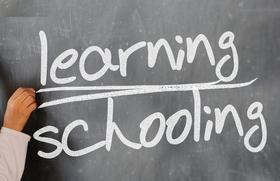- Lurleen B. Wallace Community College is a public community college with campuses in Andalusia, Greenville, Opp, and Luverne, Alabama. As of the fall 2010 semester, the college has an enrollment of 1,790 students across all campuses. The college was founded in 1969 and named for Governor Lurleen Burns Wallace.
School Highlights
Lurleen B Wallace Community College serves 2,687 students (32% of students are full-time).
The college's student-teacher ratio of 18:1 is lower than the state community college average of 19:1.
Minority enrollment is 39% of the student body (majority Black), which is less than the state average of 44%.
Quick Facts (2026)
- Enrollment: 2,687 students
- In-state tuition: $4,230
- Out-state tuition: $7,620
- Acceptance Rate: 99%
- Student-teacher ratio: 18:1
- Minority enrollment: 39%
- Source: Integrated Postsecondary Education Data System (IPEDS)
Top Rankings
Lurleen B Wallace Community College ranks among the top 20% of public schools in Alabama for:
Category
Attribute
Diversity
School Overview
The teacher population of 148 teachers has stayed relatively flat over five years.
Lurleen B Wallace Community College
(AL) Community College Avg.
Carnegie Classification
Associate's Colleges: Mixed Transfer/Career & Technical-Mixed Traditional/Nontraditional
Associate's Colleges: Mixed Transfer/Career & Technical-High Traditional
Institution Level
At least 2 but less than 4 years
At least 2 but less than 4 years
Institution Control
Public
Public
Total Faculty
148 staff
158 staff
School Calendar
Student Body
The student population of Lurleen B Wallace Community College has grown by 61% over five years.
The student-teacher ratio of 18:1 has decreased from 22:1 over five years.
The Lurleen B Wallace Community College diversity score of 0.58 is less than the state average of 0.61. The school's diversity has grown by 47% over five years.
Total Enrollment
2,687 students
2,683 students
Student-Teacher Ratio
18:1
19:1
# Full-Time Students
873 students
869 students
# Part-Time Students
1,814 students
1,814 students
# Enrollment Undergraduate
268 students
422 students
# Full-Time Undergraduate Students
873 students
869 students
# Full-Time Graduate Students
n/a
11 students
# Part-Time Undergraduate Students
1,814 students
2,077 students
# Part-Time Graduate Students
n/a
30 students
Total Dormitory Capacity
92 students
168 students
% American Indian/Alaskan
n/a
n/a
% Asian
1%
2%
% Hispanic
3%
6%
% Black
16%
26%
% White
61%
56%
% Hawaiian
n/a
2%
% Two or more races
4%
4%
% Non Resident races
n/a
1%
% Unknown races
15%
3%
Diversity Score
0.58
0.61
College Completion Rate (Students who graduate in less than 4 years)
34%
29%
College Completion Rate (Students who graduate in 4 years or more than 4 years)
n/a
30%
Average Graduate Earnings (10 Years)
$30,300
$29,700
Tuition and Acceptance Rate
The public in-state tuition of $4,230 is more than the state average of $4,077. The in-state tuition has declined by 12% over four years.
The public out-state tuition of $7,620 is more than the state average of $7,002. The out-state tuition has declined by 13% over four years.
In-State Tuition Fees
$4,230
$4,077
Out-State Tuition Fees
$7,620
$7,002
Tuition Notes
above includes fees
% Students Receiving Some Financial Aid
86%
90%
Median Debt for Graduates
n/a
$10,500
Median Debt for Dropouts
n/a
$5,500
Acceptance Rate
99%
88%
SAT Reading
n/a
530
SAT Math
n/a
545
ACT Composite
n/a
23
ACT English
n/a
21
ACT Math
n/a
22
Source: 2024 (or latest year available) Integrated Postsecondary Education Data System (IPEDS) , School Administrators
Frequently Asked Questions
How much does Lurleen B Wallace Community College cost?
Lurleen B Wallace Community College's tuition is approximately $4,230 for In-State students and $7,620 for Out-State students.
What is the acceptance rate of Lurleen B Wallace Community College?
The acceptance rate of Lurleen B Wallace Community College is 99%, which is higher than the state average of 88%.
What is Lurleen B Wallace Community College's ranking?
Lurleen B Wallace Community College ranks among the top 20% of community college in Alabama for: Diversity in US community colleges.
Recent Articles

Most In-Demand Community College Majors for 2025–26
Explore the most in-demand community college majors for 2025–26 workforce needs, aligned with hiring trends, wages, and transfer pathways.

New Guidebook Helps Students Navigate Community College
A new guidebook offers practical strategies to help students and families succeed in community college, from admissions to transfer and career planning.

Work-Study Opportunities for Spring 2026 Guide
Learn how to secure work-study opportunities for Spring 2026 before classes start, including timelines, tips, and eligibility guidance.









